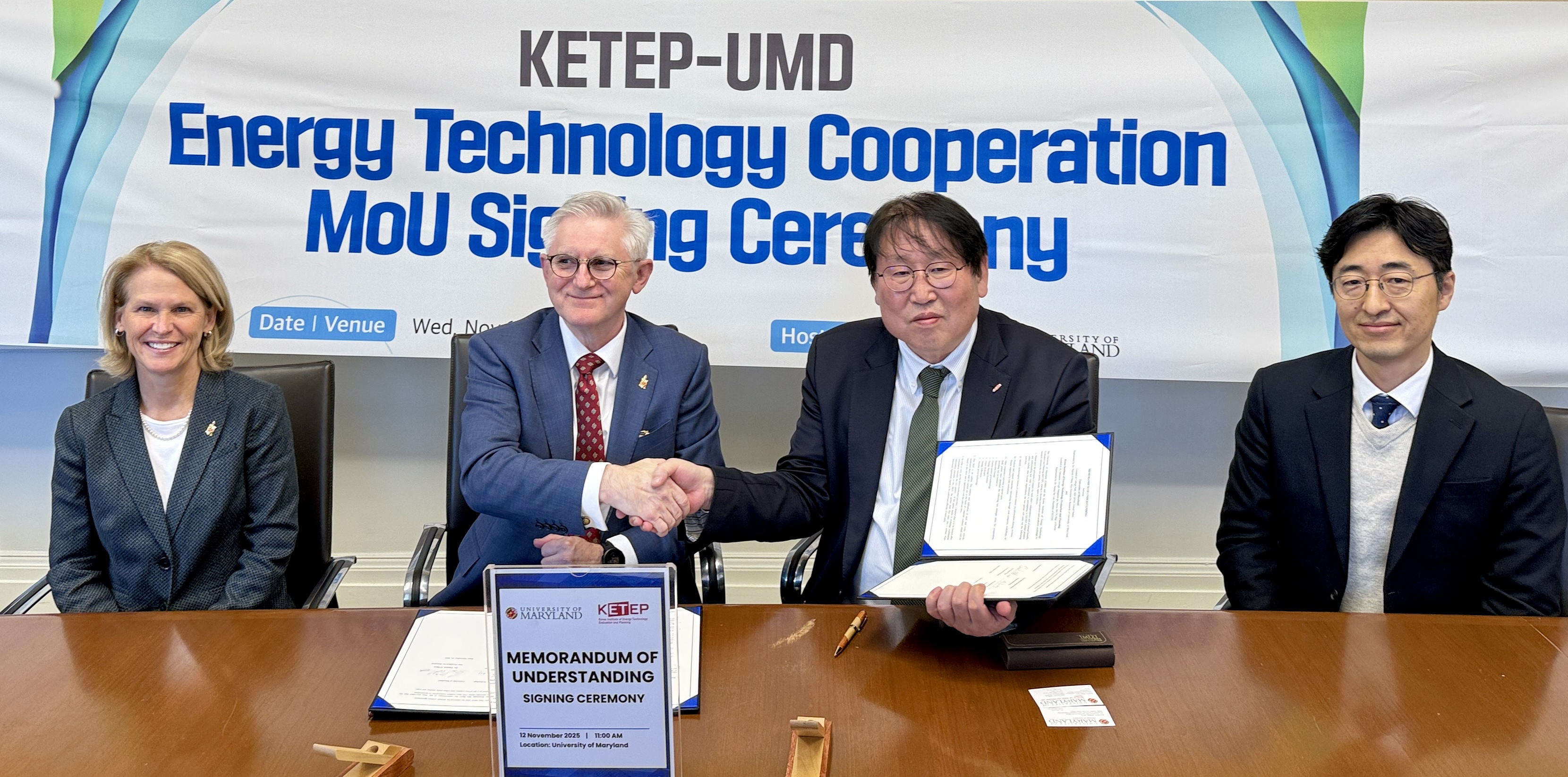News Story
Students Showcase Outstanding Basic, Applied and Innovative Energy Research

Last week NEES participated in the 2016 CINT Users Meeting in Santa Fe, NM.
NEES co-sponsored one of the three parallel Symposia of the meeting, "Electrochemical Nanostructures: Mesoscale Architectures & Integration", with moderators Sang Bok Lee (UMD) & Katherine Jungjohann (CINT, Sandia).
The 2016 NEES Accomplishment Meeting was held afterward at the same location. At this meeting, NEES students participated in a poster session with awards in three categories: Outstanding Applied Energy Research, Outstanding Basic Research and Innovative Idea Award.

Caption: The NEES team meets in Santa Fe.
The three poster award winners are:
 Outstanding Applied Energy Research: “Role of the transition metal dissolution species on the battery performance and failure modes,” Angelique Jarry, UMD
Outstanding Applied Energy Research: “Role of the transition metal dissolution species on the battery performance and failure modes,” Angelique Jarry, UMD
Detailed insight into the mechanism of interaction between electrolyte solvents and Liion high voltage electrodes as well as subsequent chemical cross talk is a fundamental requirement for development of improved electrical energy storage (EES) devices. At potentials > 4.2 V, surface reactivity of Liion positive electrode materials toward the electrolyte results in electrolyte oxidation accompanied by transition metal dissolution.There is no doubt concerning the crucial role of the transition metal products formed in the gradual degradation of electrochemical performance in Liion batteries. Indeed, an impedance rise directly proportional to the concentration of the unknown MnII species in the SEI originating from LiMn2O4 was observed.However, the mechanism of transition metal dissolution from Li[NixMnyCoz]O2 positive electrode materials, their transport across the electrolyte, and the effect on function of the cell remain unclear.
In this work, we have reported that contrary to the disproportionation mechanism proposed 30 years ago, transition metal dissolution occurs via the formation of Ni(II), Co (II/III) and Mn(II/III) coordination complexes at the Li[NixMnyCoz]O2
surface via oxidation of DEC and EC at potentials > 4.2 V. This result in the deposition of a mixture of M(II)(acac)2, M(II) oxalate, and M(II) carbonate at the anode electrode surface in the SEI.Using model systems, we have demonstrated that Li+ transport across the solid electrolyte interphases in Liion anodes is not only strongly dependent on the concentration but also on the nature of the transition metal species present in the SEI. While only a slight impedance rise is observed in the presence of Mn(II) carbonate and Mn(II) oxalate, the presence of Mn(II)(acac)2 and Mn(III)(acac)3 results in a drastic increase of resistance during cycling. This clearly highlights the peculiar interaction of βdiketone complexes with SEI components pinpointing these species as primary responsible for the observed impedance increase of the graphite anode. A detailed description of possible reaction mechanisms leading to the formation of metal complexes at the Li[NixMnyCoz]O2/organic carbonate electrolyte interfaces together with their effect on the the Liion transport across the SEI layer was presented and discussed.
 Outstanding Basic Research: “Multiscale Simulation of Allsolidstate Liion Battery,” Hong-Kang Tian, Michigan State U.
Outstanding Basic Research: “Multiscale Simulation of Allsolidstate Liion Battery,” Hong-Kang Tian, Michigan State U.
Interface contact and slow reactions limits the rate performance of allsolid state Liion batteries. To illustrate this problem, a 1D continuum model was developed to simulate the discharging process of an allsolidstate Liion battery, which is composed of Li as the anode, LiCoO2 as the cathode, and Li3PO4 as the electrolyte. Based on this model, the effect of losing contact area between the electrode and solid electrolyte was investigated. Based on the current model and parameters, the current limited by Li2CoO3 intercalation reaction is determined to be ~0.01 A/cm2. If the current is limited by the maximum flux of Liion in the solid electrolyte, the maximum current was estimated to be ~0.1 A/cm2. Both are higher than the typical current can be achieved in experiments, suggesting interface reaction kinetics not well captured in the continuum model. To future understand this question, we aim to build a bridge between this 1D continuum model and the atomiclevel calculation.
 Innovative Idea Award: Xin Sylvia Li, Yale
Innovative Idea Award: Xin Sylvia Li, Yale
To build an ultra compact battery with maximum power density, highly confined electrolyte environments become inevitable when electrodes are densely packed. Moreover, ion transport within nanoconfined electrolyte between interfaces of electrolyte/active storage material is essential for understanding the underlying science at/near the battery electrode surface. Utilizing atomic layer deposition (ALD) for wellcontrolled electrode/fluid interface, we have developed a novel platform of solidstate nanofluidic devices to investigate the electrochemistry under nanoconfinement with well defined geometry and minimum averaging effects.
Published October 3, 2016









